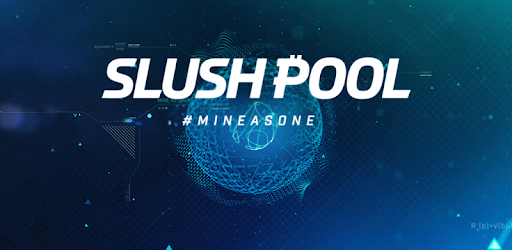Slush Pool analysis: Is it the best for mining Bitcoins?

At a time when Bitcoin had just hit the market, my ordinary office computer was sufficient to mine Bitcoins, with the puzzle difficulty being on the lower side. As they became popular, difficulty levels soared rapidly, eventually making personal computers obsolete for mining. The PCs paved the way for more advanced systems like GPUs, and now ASICs, for mining various cryptocurrency coins, including Bitcoin. The next challenge was guaranteeing profitability to individuals like me, as the multiple setup and power consumption costs became a hurdle. This eventually got solved to a great extent by the advent of mining pools. A mining pool is a group of individuals or entities who come together to mine a particular coin, dividing the costs and rewards proportionately. A pioneer in this segment is Slush Pool. With multiple handy features, Slush Pool tops most of the mining pool lists for Bitcoin.
Though there are currently mining pools bigger than Slush Pool for mining Bitcoins, no one can take away the tag of them being the first ones in the industry. Their journey began a decade ago, on 27th November 2010, the date it was announced. It was created by the same people who developed SatoshiLabs, having their permanent home in the Czech Republic. A well established and trusted name in the cryptocurrency community, SatoshiLabs were also the first ones to create a hardware wallet for crypto coins, named Trezor. They did consider other coins that might have proved more profitable but eventually flunked the idea, sticking to Bitcoins. Having been there for around 10 years, they have almost seen it all in the crypto universe.
The reward for creating new blocks is 12.5 Bitcoins, along with it the miners also get the fees associated with transactions, including freshly generated blocks. But in the case of a mining pool, it isn’t the same. Some pools do distribute the fees among the miners, partially or completely, depending upon the agreement the owner has with the miners. Slush Pool is a great option in these terms, as they distribute all fees associated with transactions to the miners. The great thing I find about the pool, apart from being technologically advanced is that it’s also simple to set up, making Slush Pool a preferred choice for beginners.
Among the key features of Slush Pool is the faithfulness and stability it brings in for the miners. This pool has been with Bitcoin right from the beginning, even during the days when Bitcoin was put under a lot of pressure, worldwide. The pool has immense respect coming in from the community members, and over the years has mined millions of new Bitcoins, heavily impacting the stability security of the network. Regular payouts without any surprise delays add to the trust factor, ensuring the miners get their share the moment it is made possible by the network. The developers involved also feel deeply for the community and are proactive in bringing in the best features and technology to the network. The miners enjoy the privilege of bringing in their proposal improvement or vote on the proposals brought in by other miners. Through this mechanism, several features have been added. A popular one being providing support for Litecoin mining.
In terms of support, the users have the provision to be alongside the core protocol of Bitcoin, deciding against voting or mentioning that it doesn’t make much of a difference. In such cases, the pool decides on pinpointing where to allocate the mining power they have. State of the art servers, functioning all day and all night, spread all over the world, provide a solid base for miners to mine any time they want, with the safety of customer support to fall on to in case of any issues. For account security, a coating of CloudFare is done around the system, protecting it from DDoS attacks. There is also an option to use the two-factor verification, in case you want to further amp up the security. In the multi-stage verification, a unique will be required, each time a user decides to log in. The same will be application generated, to be sent on the registered number.
Moving on to the technicalities involved in cryptocurrency mining and how knowing that beforehand will help join SlushPool, it’s time to dig a little deeper.
A good mining device specializes in operating on a balanced ratio of hash rate and electricity consumed. Hash rate is nothing but the total number of solutions of hash functions, a mining device can produce in a second. It is the most critical aspect in determining the efficiency of hardware or equipment. With a high hash rate, the chances of successfully solving a block also increase. The time gap between solving two blocks can vary drastically from a few seconds to extremely long hours, depending upon various factors.
Each miner submits the work to the mining pool, it is called share, for earning the reward. The share includes the hashes computed by the mining device, which is as per the conditions of calculation, depending on the difficulty level of the network. An algorithm developed around variable difficulty is used to ensure that the tasks are distributed evenly among the miners, maximizing efficiency. Powerful machines get the tasks that are more challenging and less powerful ones are given the responsibility of solving the lesser complicated calculations. An alert limit is set to ensure the miner’s contribution is in order. The rate falling below the alert limit is an indication of a hardware problem, disrupted internet connection, or incompatible difficulty rate. The state rate is an indicator of the total shares, sent to a pool, but connected to a block already found. This shows network latency or the lack of computing power of the device.
A prerequisite of joining the pool is having a mining device. With the computing levels of devices reaching new heights every day, mining has become hard, and the way to go about in the current day and age is an ASIC miner. The great performance it delivers does come at a high cost, with some easily reaching a few thousand dollars. Once a miner has a device, next comes creating an account at Slush Pool, which is easy and takes just a couple of minutes. One just has to enter the basic details and confirm the account via email verification.
For mining Bitcoins, the user has to pick the address of the server, depending upon the geographical location. The security issue isn’t there as mining with someone else’s credentials would only help in benefitting the original holder of the account. Post which, a mining software needs to be picked, and servers of Slush Pool need to be pointed at by inputting the information.
The payments made to the miners are transparent. It is calculated by taking into account pool fees, hash rate, and block value, putting them in a formula. 12.5 BTC is the reward on a block, along with the fees from transacting Bitcoins. Multiple confirmation stages are put in place to ensure that the mined block is successfully accepted by the network.
Being the first mining pool for Bitcoin, functioning brilliantly for a decade, Slush Pool is one of the most trustworthy Bitcoin mining pools available in the crypto mining industry.
Reviews By Other Customers
Write A Review
Mining Techn Group OU
Mining Techn Group OU is the sole owner of miningwatchdog.com
Mining Techn Group OU Registration number 16235478
Email: [email protected]
© 2019 - 2024 Miningwatchdog.com. Mining Techn Group Ou
 $57,595.00
$57,595.00
 $2,916.54
$2,916.54
 $2,695.85
$2,695.85
 $2,316.31
$2,316.31
 $548.04
$548.04
 $415.17
$415.17
 $305.40
$305.40
 $123.46
$123.46
 $100.65
$100.65
 $83.04
$83.04
 $79.31
$79.31
 $58.64
$58.64
 $57.23
$57.23
 Views: 828
Views: 828
